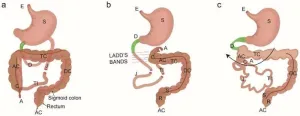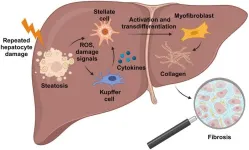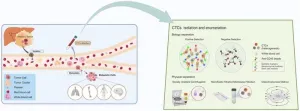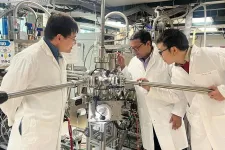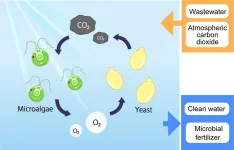(Press-News.org)
Gastroschisis, a congenital abdominal wall defect, has transformed from a uniformly fatal condition to one with a 95% survival rate through surgical advancements over the past six decades. The primary goal of managing gastroschisis is to mitigate fetal and postnatal risks, including damage from herniated bowel loops and ensuring effective decompression of the gastrointestinal tract during recovery. This review focuses on both preventative and corrective aspects of gastroschisis management, highlighting innovations in neonatal surgery that improve quality of life and long-term health outcomes.
Definition and Classification
Traditionally, gastroschisis is defined as a paraumbilical abdominal wall defect without a covering sac for the exposed organs. This review proposes an expanded definition, emphasizing a congenital secreto-motility disorder affecting the colorectal and hindgut, which can worsen the abdominal wall defect. The condition’s classification includes simple and complex forms and highlights rare types such as “variant gastroschisis,” which encompasses atypical presentations. The differentiation from omphalocele is emphasized, as gastroschisis typically presents with gastrointestinal complications rather than genetic anomalies often associated with omphalocele.
Embryo-pathogenesis
Although environmental factors primarily influence gastroschisis, the exact pathogenesis remains unclear. Proposed theories suggest a combination of abdominal wall defects and increased intraabdominal pressure leads to herniation. This review provides insights into intrauterine events and hindgut anomalies that can affect development, offering evidence from experimental models and prenatal monitoring to advance understanding of the condition’s origins.
Epidemiology
Risk factors for gastroschisis include maternal age under 20, substance use, stress, and micronutrient deficiencies, with the highest prevalence observed in lower socioeconomic backgrounds. Regional disparities in healthcare access contribute to higher gastroschisis rates and poorer outcomes. Preventative strategies include improving maternal nutrition, increasing awareness of risk factors, and promoting healthcare access, particularly for at-risk populations.
Antenatal and Perinatal Management
Early diagnosis via ultrasound enables detailed prenatal monitoring and the option for delivery at specialized centers. The optimal timing for delivery is around 37–38 weeks, ideally via vaginal delivery to avoid complications linked to cesarean sections. Upon birth, careful handling of exposed bowel and temperature regulation are critical to prevent further injury. The use of preformed silastic silo and a multidisciplinary approach to perinatal management have significantly improved neonatal outcomes.
Surgical and Postoperative Management
The primary aim in gastroschisis surgery is to reduce and close the defect without risking bowel ischemia due to high intra-abdominal pressure. The review describes bedside reduction and sutureless closure techniques, particularly effective for simple gastroschisis. For complex cases, gradual reduction using a silastic silo is favored. Postoperative care focuses on preventing infection, minimizing antibiotic exposure, and supporting gastrointestinal function, often through enteral feeding as soon as possible to reduce the reliance on total parenteral nutrition (TPN).
Outcomes and Prognosis
Survival rates are high, with complications primarily arising in complex cases. Long-term complications can include gastrointestinal dysfunction, TPN dependence, and growth delays. The review encourages early feeding with breast milk to reduce risks of complications like necrotizing enterocolitis and suggests targeted interventions for cases with severe intestinal resection or short bowel syndrome.
Conclusions
Through a comprehensive approach encompassing preventative, surgical, and postnatal care, outcomes for gastroschisis patients have improved markedly. This review underscores the need for continued innovation in minimally invasive techniques and patient-centered care strategies to optimize results. Future research may reveal additional insights into prevention, prenatal diagnostics, and neonatal management of gastroschisis.
Full text
https://www.xiahepublishing.com/2994-8754/JTG-2023-00092
The study was recently published in the Journal of Translational Gastroenterology.
Journal of Translational Gastroenterology (JTG) dedicates to improving clinical diagnosis and treatment, advancing understanding of the molecular mechanisms, and promoting translation from bench to bedside of gastrointestinal, hepatobiliary, and pancreatic diseases. The aim of JTG is to provide a forum for the exchange of ideas and concepts on basic, translational, and clinical aspects of gastroenterology, and promote cross-disciplinary research and collaboration.
Follow us on X: @xiahepublishing
Follow us on LinkedIn: Xia & He Publishing Inc.
END
Liver fibrosis is a progressive and potentially reversible condition that results from chronic liver damage, which can be caused by a variety of factors, including metabolic dysfunction-associated steatotic liver disease (MASLD), alcohol abuse, and viral hepatitis. MASLD affects a significant portion of the global population and can progress to metabolic dysfunction-associated steatohepatitis (MASH), leading to liver cirrhosis if left untreated. Given the prevalence of MASLD and its related conditions, the study of fibrosis and its regression ...
From November 11 to 12, the Fortune Global Forum 2024, an invite-only premier event of Fortune, is set to gathers the leaders of the world’s biggest multinational companies on the dynamic frontiers of global business in New York, where business leaders from around the globe come together to create a modern roadmap for success.
Insilico Medicine(“Insilico”), a global leading generative artificial intelligence (AI)-driven biotechnology company, announces that Alex Zhavoronkov PhD, founder and CEO of Insilico Medicine will be attending the Fortune ...
Hepatocellular carcinoma (HCC) is a significant global health concern, particularly in regions like the Asia-Pacific, where chronic viral hepatitis and liver diseases contribute to its high incidence and mortality. Despite medical advancements, the late-stage diagnosis of HCC remains a major challenge, which underscores the need for more effective early detection strategies. Circulating tumor cells (CTCs), which are tumor cells released into the bloodstream from primary neoplastic sites, offer a promising avenue for non-invasive cancer diagnostics. This review provides a comprehensive overview of CTC detection methods, ...
MINNEAPOLIS / ST. PAUL (11/08/2024) — Researchers at the University of Minnesota have achieved a new material that will be pivotal in making the next generation of high-power electronics faster, transparent and more efficient. This artificially designed material allows electrons to move faster while remaining transparent to both visible and ultraviolet light, breaking the previous record.
The research, published in Science Advances, a peer-reviewed scientific journal, marks a significant leap forward in semiconductor ...
As air temperatures stay elevated through fall months, people may still want clothes that cool them down while outside, especially if they live in cities that stay warmer than rural landscapes. Researchers who previously demonstrated a cooling fabric coating now report on additional tests of a treated polyester fabric in ACS Applied Materials & Interfaces. Fabric treated with the team’s chalk-based coating kept the air underneath up to 6 degrees Fahrenheit cooler in warmer urban environments.
Researchers Evan D. Patamia, Megan K. Yee and Trisha L. ...
As cancer cells grow, they pump out metabolic byproducts such as lactic acid into the tumor microenvironment. Exhausted T cells — which have lost their cancer-fighting oomph — consume this lactic acid, which further saps their energy, according to new research from the University of Pittsburgh and UPMC Hillman Cancer Center.
When the researchers blocked the protein that imports lactic acid into cells, exhausted T cells gained a new lease on life, which led to improved tumor control in mouse models of cancer. The findings are published today in Nature Immunology.
“Blocking access to inhibitory metabolites is a completely new take on how we can reinvigorate ...
Only a few weeks ago, massive precipitation produced by the storm “Boris” led to chaos and flooding in Central and Eastern Europe. An analysis conducted by the Alfred Wegener Institute shows that in a world without the current level of global warming Boris would have deposited roughly nine percent less rain. Such conclusions can be drawn thanks to a new modelling approach called ‘storylines’. How it can be used in near-real-time was just presented in the Nature journal Communications Earth & Environment. At the same time, the AWI team released a freely available online tool that ...
Researchers today (Nov. 8, 2024) are releasing the flagship dataset from an ambitious study of biomarkers and environmental factors that might influence the development of type 2 diabetes. Because the study participants include people with no diabetes and others with various stages of the condition, the early findings hint at a tapestry of information distinct from previous research.
For instance, data from a customized environmental sensor in participants’ homes show a clear association between disease state and exposure to tiny particulates of pollution. ...
Culturing, a term for growing microorganisms in the laboratory, is a basic yet indispensable method in microbiology research. Microorganisms are often cultured in a liquid medium that provides essential nutrients, and this process is both simple and highly effective. In addition to nutrients, oxygen availability is also critical for the growth of aerobic microorganisms. However, oxygen does not dissolve easily in the liquid medium. As a result, the medium needs to be forcibly aerated, usually by shaking.
Several techniques have been developed for better aeration of “shake” cultures, including “baffled” shake flasks, which have indentations designed to improve oxygen ...
Bakeries and wineries can’t do without yeast, but they have no need for green algae. Wastewater treatment facilities, however, might just want to have these microorganisms team up. Osaka Metropolitan University researchers have discovered that these simple organisms form the best combination in terms of boosting wastewater treatment efficiency.
The active sludge method of wastewater treatment requires electricity to ensure the flow of oxygen that feeds bacteria and other organisms that process the water. Adding microalgae ...
